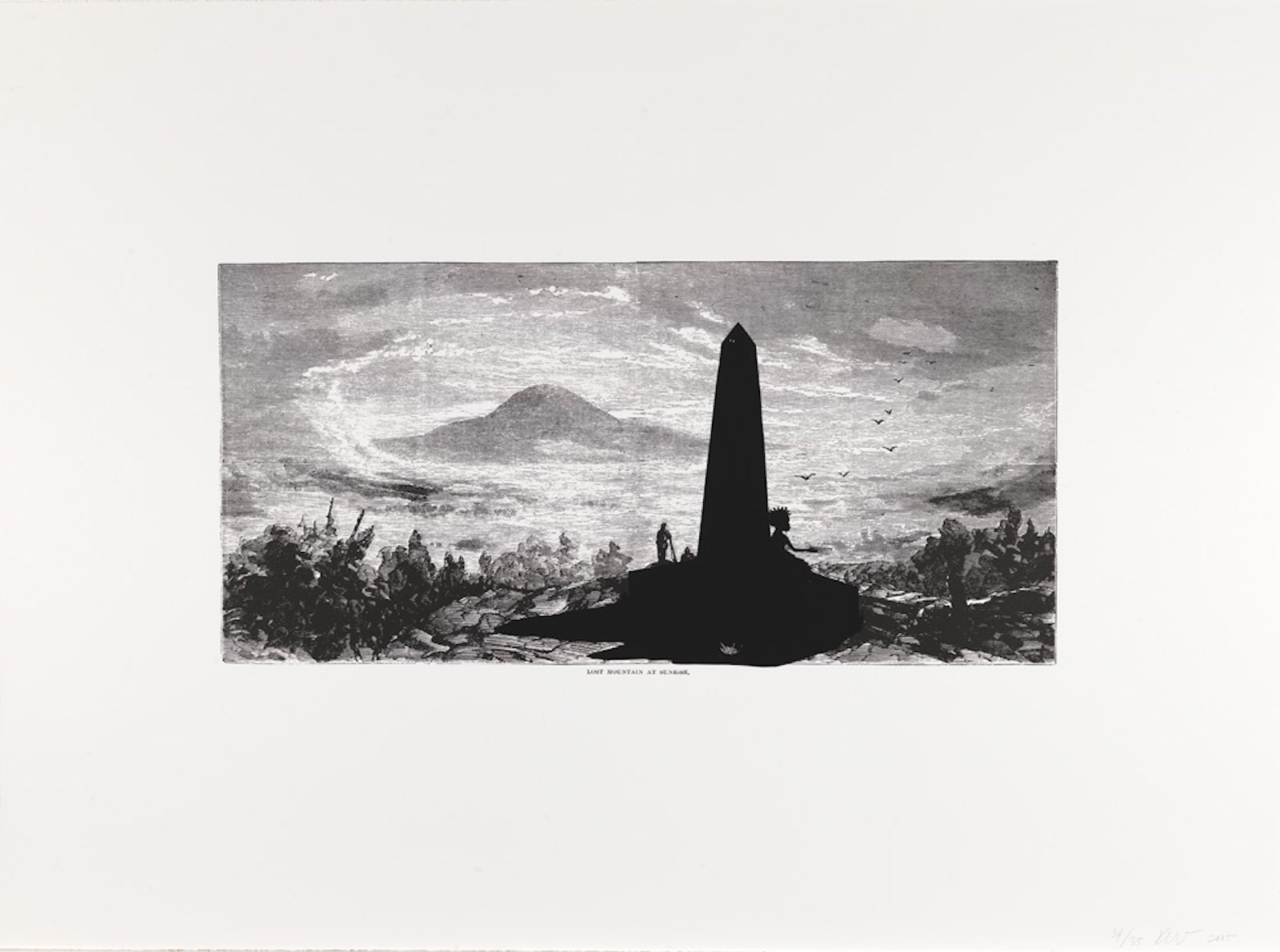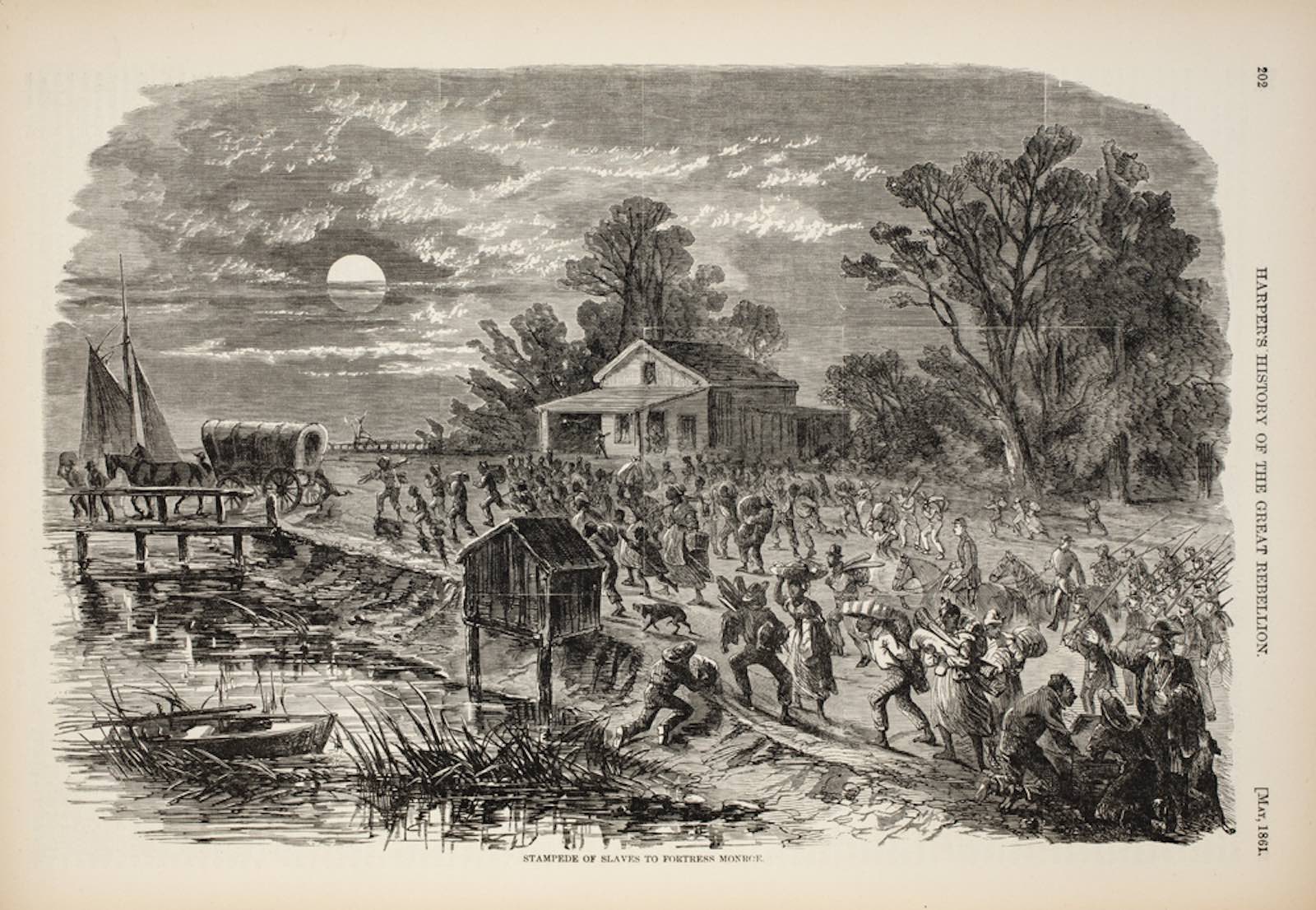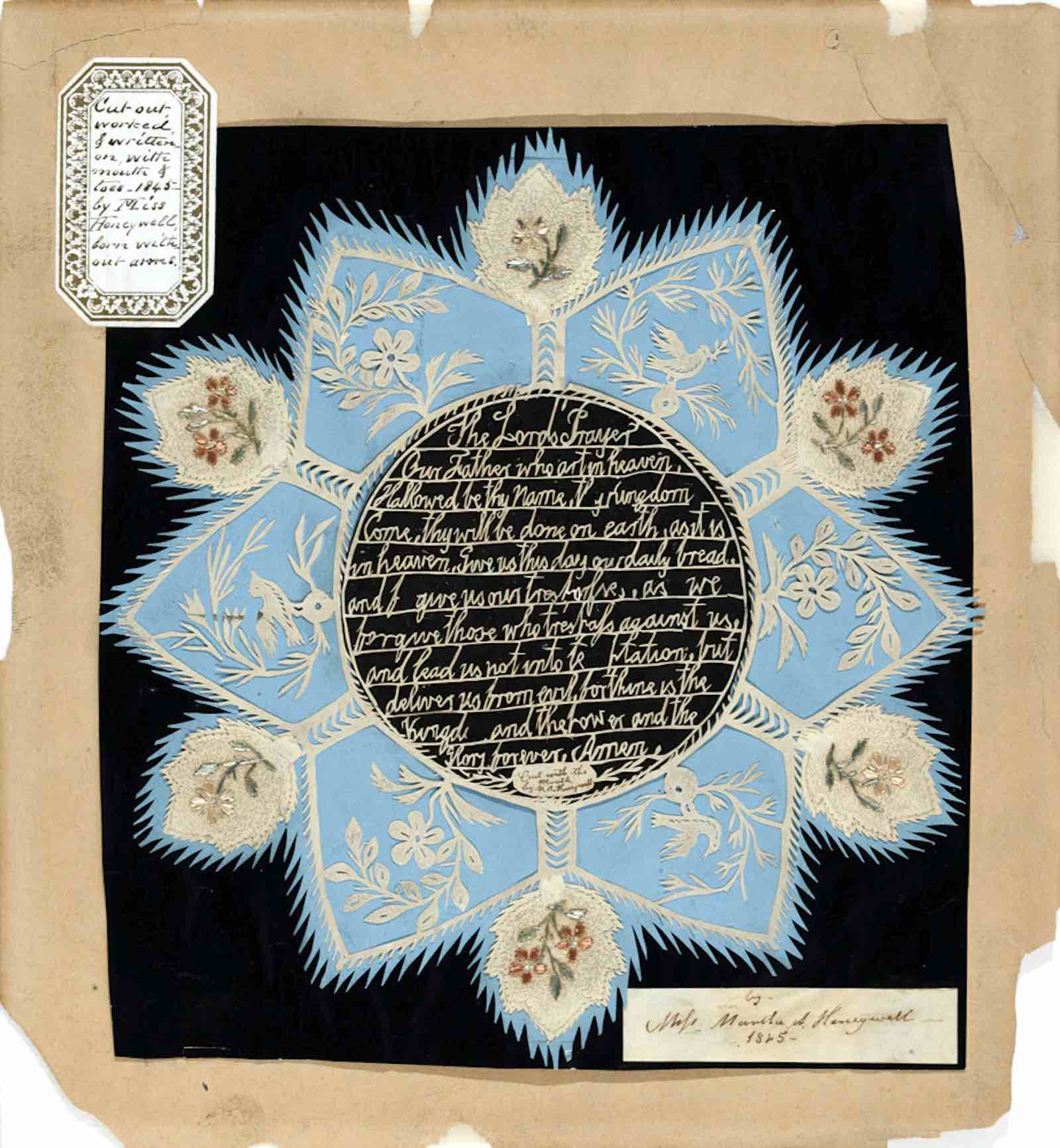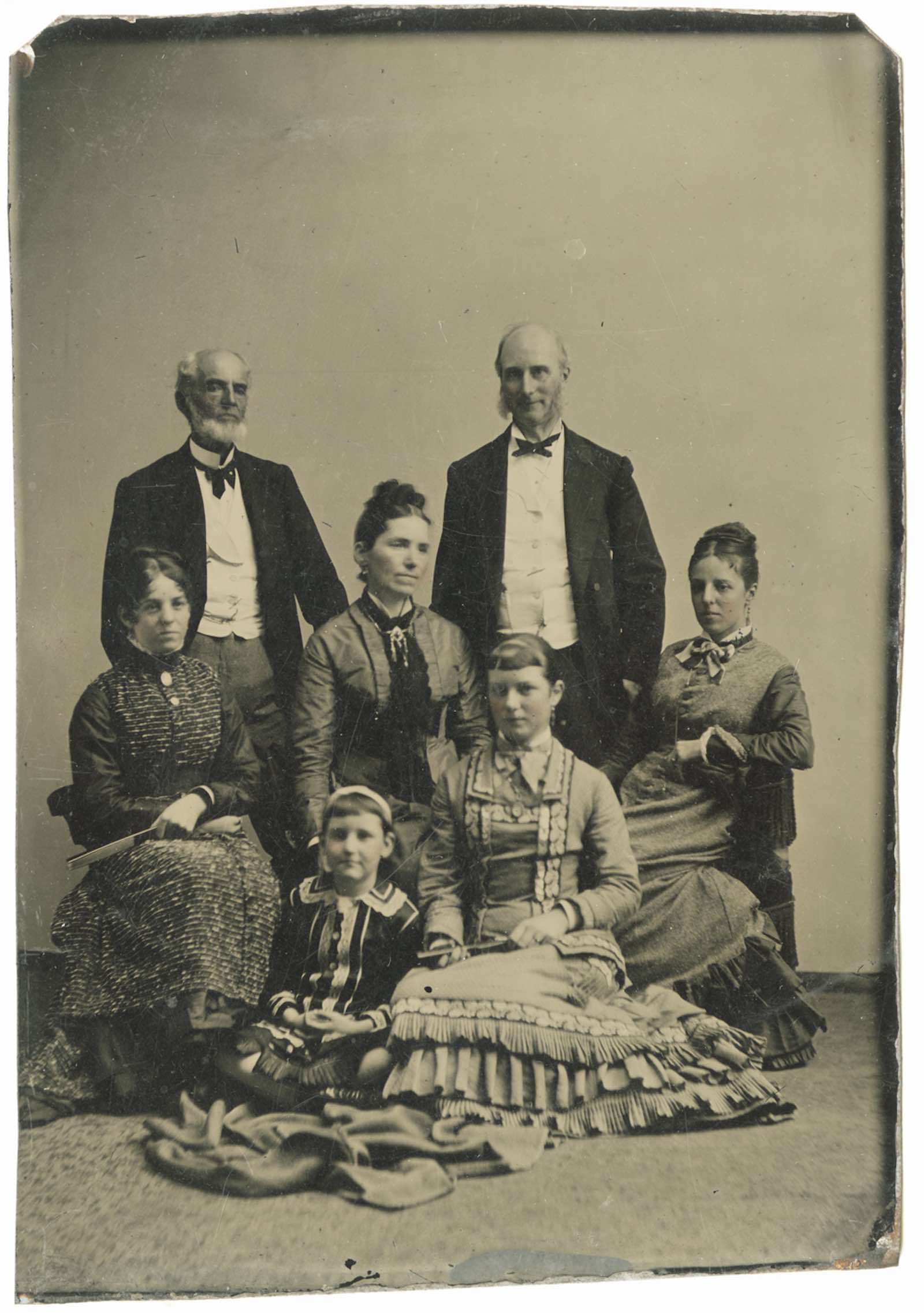Kara Walker: Harper’s Pictorial History of the Civil War (Annotated)
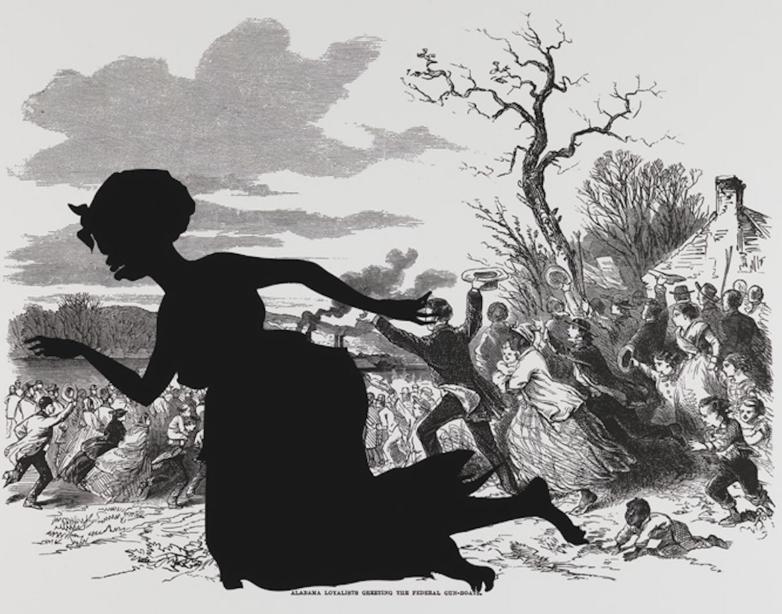
Kara Walker (b. 1969). Alabama Loyalists Greeting the Federal Gun-Boats, from the portfolio Harper’s Pictorial History of the Civil War (Annotated), 2005 Offset lithograph and screenprint on paper. Smithsonian American Art Museum, Museum purchase through the Luisita L. and Franz H. Denghausen Endowment.
The New-York Historical Society, the city’s first museum, presents Kara Walker: Harper’s Pictorial History of the Civil War (Annotated). Walker’s series of 15 prints responds to the two-volume anthology Harper’s Pictorial History of the Great Rebellion first published in 1866.
On view February 24 – June 11, 2023 in the Joyce B. Cowin Women’s History Gallery, the acclaimed series exposes the omission of African Americans from the narrative and urges viewers to consider the continuing legacy of racial stereotyping and violence. Traveling from the Smithsonian American Art Museum, the exhibition has been contextualized by the Center for Women’s History at New-York Historical with images, objects, and documents from its collections.
For over two decades, Kara Walker has created work that weaves together imagery from the antebellum South, the brutality of slavery, and racist stereotypes. Her works provoke controversy through their use of exaggerated caricatures that reflect long-standing racialized and gendered stereotypes and their lurid depictions of history. To create her prints, Walker enlarged select illustrations from Harper’s and overlaid them with large, stenciled figures. The silhouettes visually disrupt the original scenes and suffuse them with the painful history left out of these illustrations.
“This thought-provoking series illuminates the brutal nature of the antebellum South as well as the injustice done to the historical record by leaving slavery out of the official narrative of the Civil War,” said Dr. Louise Mirrer, president and CEO of New-York Historical. “Kara Walker is a singular talent, and we are honored to display her work in this compelling exhibition. We hope that visitors come away with a deeper understanding of this period of time, a willingness to confront uncomfortable truths and a renewed commitment to the ideals of equality and justice.”
Composed of 836 pages of scenes, maps, plans, portraits, and writings on the conflicts and key figures of the Civil War, the 1866 anthology Harper’s Pictorial History of the Great Rebellion was published immediately after the Civil War and aimed to provide an authoritative account. As described in the preface, publisher Harper and Brothers sought to “narrate events just as they occurred.”
Written to appease white northerners and southerners however, the text largely excluded the experiences of African Americans, the brutality of slavery, and women’s contributions to the war effort. Walker’s appropriation of Harper’s engravings suggests the impossibility of any such “impartial” telling of history and draws attention to the omission of the actual African American experience.
Walker’s prints are presented alongside a selection of the original Harper’s images on which they are based. Seen together, the two bodies of work bring attention to Walker’s artistic process and her approach to history as an always-fraught, always-contested narrative. Her ghostly scenes assert the influence of racial history on contemporary life and create a provocative dialogue between the past and the present.
The exhibition also explores the history of Harper and Brothers, a northern publishing company, through original documents, photographs, and objects. A section of the exhibition focuses on women’s participation in the silhouette tradition. Prior to the advent of the camera, the cut-paper silhouette was used to preserve likenesses throughout the 1800s. Subjects included enslaved women, who sat for portraits commissioned by their enslavers.
Kara Walker (b. 1969) is a New York-based artist, best known for her candid investigation of race, gender, sexuality, and violence through silhouetted figures that have appeared in numerous exhibitions worldwide. Born in Stockton, California, Walker was raised in Atlanta, Georgia, from the age of 13. She studied at the Atlanta College of Art and the Rhode Island School of Design. She is the recipient of many awards, notably the John D. and Catherine T. MacArthur Foundation Achievement Award in 1997 and the United States Artists Eileen Harris Norton Fellowship in 2008. In 2012, Walker became a member of the American Academy of Arts and Letters. Her work can be found in numerous museums and public collections.




